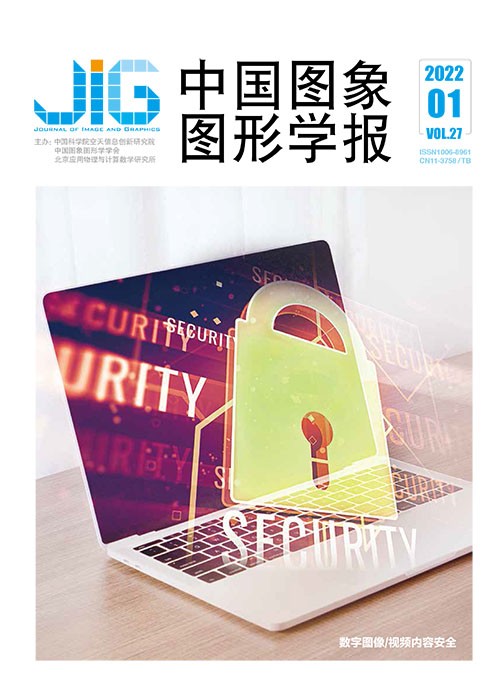
视频内容安全评价发展探讨
摘 要
随着信息技术的快速发展,以视频为主的新媒体极大改变了信息传播方式。但是视频中不安全内容的传播容易带来潜在风险,可能产生不良社会影响,并造成一定损失。因此,视频内容的安全性研究具有重要的理论价值和重大应用需求,受到了研究人员的广泛关注。视频内容安全评价是描述视频内容安全性的重要方法,能够有效管理视频中不良信息的传播风险,降低影响和损失。本文从建立技术理论体系角度,围绕4个方面的内容监管,梳理了视频内容安全评价体系。围绕5个评价原则,总结了视频内容安全评价方法,阐述了基于PDCA (plan-do-check-act)原理的视频内容安全评价流程;综合考虑不良内容的特点,从5个方面提炼形成了视频内容安全评价指标,包括内容干扰度、内容恶意度、内容敏感度、内容暴露度和内容倾向度。给出视频内容安全风险计算的过程,阐述了基于层次分析的量化方法,从而得到视频内容风险程度,即视频内容安全风险值,结果考虑了决策的主客观特征;从高、中、低3个等级评价视频内容风险严重性的总体水平,更便于优化视频内容风险处理顺序。等级排序不仅提高了检测发现安全风险的效率,也为视频内容分级提供数据支撑。最后分析了视频内容评价面临的挑战机遇,详尽总结了十大待解决问题,展望了未来研究方向与发展趋势。
关键词
Research on video content security evaluation
Wu Chensi1, Cai Maobin2, Yang Yaochun1, Zhao Xiaoying1, Fan Kefeng1(1.China Electronics Standardization Institute, Beijing 100007, China;2.Xingtang Communication Technology Co. Ltd., Beijing 100191, China) Abstract
The emergence of media video has hugely changed and facilitated information spreading, including bad ones. It is urgent to effectively manage and control the production, fabrication, and release of video content nowadays. The inadequate information can be summarized as video content security (VCS). VCS has become an essential part of network content security. The main issues for video content security of media platforms are keyword search, video frame extraction, and manual supervision. Uneven regulatory audit and weak audit capabilities of small and medium-sized platforms are still concerned in common. To interpret the potential risks and practical implications of bad information in the video, the video content supervision system is to construct the video content security evaluation (VCSE). VCSE offers an effective way to guarantee the security of network content. The potential risks in video or video production are identified, analyzed, and evaluated on the systematic aspect in advance. Risk manipulations are implemented to guarantee the proper security management or control functions. VCSE can illustrate content security quantitatively. Video content security evaluation system (VCSES) can provide a scientific basis for clarifying audit priority and decision-making. This research summarizes a system in the context of the content supervision of pornography, violence, terrorism, politics, and bad scenes. The system includes three parts, including standards, content identification, and evaluation methods. The illustrated evaluation process is to improve the feasibility and operability of video content security management. Based on the principle of plan-do-check-act (PDCA), the evaluation process mainly includes the pre-stage, analysis, check, and improvement stage. In the pre-stage, the insecure semantics in the video is identified, and the relevant laws and regulations, technical standards, and technical data of engineering and system are demonstrated. At the analysis stage, the detection method is opted to identify and analyze the potentially lousy information. At the verification stage, secure implementations are facilitated. In comparison with qualitative and quantitative evaluation, the implication of technical and management are offered to eliminate or weaken the chaos factors. In the improvement stage, the proposed scheme is demonstrated for the content that does not conform to the standard in the video. The management system of video risk control measures is implemented. This research summarizes and forms the video content security evaluation index and method from five aspects:content interference, content malice, content sensitivity, content exposure, and content tendency. First, the amount of key frames and problem frames are determined, and the index value is calculated. Next, the weight of the index value is set. At last, the video content security risk value is obtained. The greater the degree of video content security risk is, the higher the risk levels are. The evaluation takes the subjective and objective characteristics of decision-making into account. The video content risk severity level is evaluated from three aspects of high, medium, and low. The ranking of video content security results is more qualified, which improves the efficiency of detecting security risks and provides data support for video content classification. Finally, this research analyzes the challenges and opportunities for video content evaluation. From the perspective of usability, reliability, and efficiency, it summarizes ten aspects to be solved in detail, such as data set, accurate identification, content interference, security prediction, interconnection, content traceability, real-time monitoring, and artificial intelligence. In summary, an overall security evaluation framework, a security evaluation theory, and a technology system have been built up to realize a more accurate evaluation.
Keywords
network content security video content content security evaluation video analysis quantitative evaluation
|



 中国图象图形学报 │ 京ICP备05080539号-4 │ 本系统由
中国图象图形学报 │ 京ICP备05080539号-4 │ 本系统由